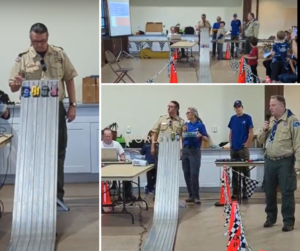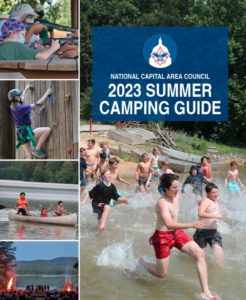 Planning your summer? Check out our summer camps! The 2023 NCAC Summer Camp Guide is now available online.
Planning your summer? Check out our summer camps! The 2023 NCAC Summer Camp Guide is now available online.
www.ncacbsa.org/summer-adventure
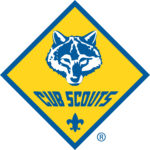
Cub Scouts
Is your scout going to be a rising Tiger, rising Wolf, rising Bear, or rising Webelos or Arrow of Light? Cub Scout camps all have an overarching theme. It’s Off to the Races at the District Day and Twilight camps. Find one near you! Or get ready for a mysterious week at Day Camp at Camp Snyder. The theme this year is ???. Ready for the next step up? Sign up for a short overnight camp at Camp Snyder’s Resident Weekends.
Are your rising Webelos and AOL dens looking for a weeklong adventure? Camp Ross is Goshen Scout Reservation’s dedicated overnight Webelos camp. The theme this summer is Sherlock Ross: The Case of the Disappearing Camps. Help the camp staff solve the case!
Scouts BSA
Is your scout bridging into a Scouts BSA Troop? There are plenty of options. Camps Bowman, Marriott, and Olmsted at Goshen Scout Reservation offer a variety of dining options, unique and favorite Merit Badges and activities, and exciting programs for new scouts, older scouts, and all the scouts in between. Finish out your summer with Camp Catoctin BSA’s expert Merit Badge counselors in mid-August.
Is your Scout not able to attend camp with their Troop? Are they looking for a second week? Check out our options for individual scouts: Goshen runs Provisional Camp each week and Camp Snyder has Scout Specialty Week with both overnight and day camp options.
Older Scouts, Venturers, & Sea Scouts
Need more adventure for older scouts, Venturers, and Sea Scouts? Sign your unit up for a backpacking trek or a river trek at Goshen’s Lenhok’sin High Adventure. Individuals can find adventure with a High Adventure Base Trip to a National or local High Adventure with a council contingent run by the NCAC High Adventure Committee. Order of the Arrow members should also make note of GOAT, the Goshen OA Trail Crew.
And of course, for those ages 14 and up who just cannot get enough summer camp, there is always the option to join summer camp staff!
There are so many options that all this is only a brief summary! View the 2023 NCAC Summer Camp Guide for details and pictures on all the possibilities for your summer. Get outdoors, have fun, and #adventureon!

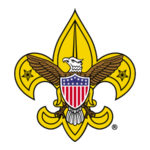
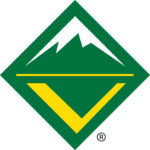
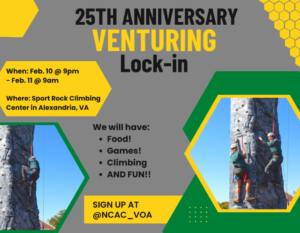

 BSA DISTINGUISHED CONSERVATION AWARD PROJECT SUMMARY
BSA DISTINGUISHED CONSERVATION AWARD PROJECT SUMMARY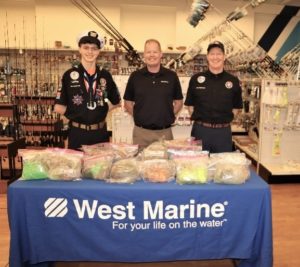 1) GREEN EXPO (Apr): 250 people attended at the Vienna Community Ctr.
1) GREEN EXPO (Apr): 250 people attended at the Vienna Community Ctr.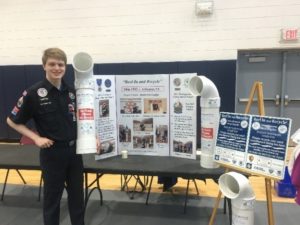
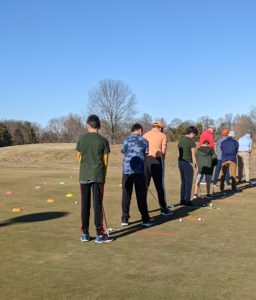

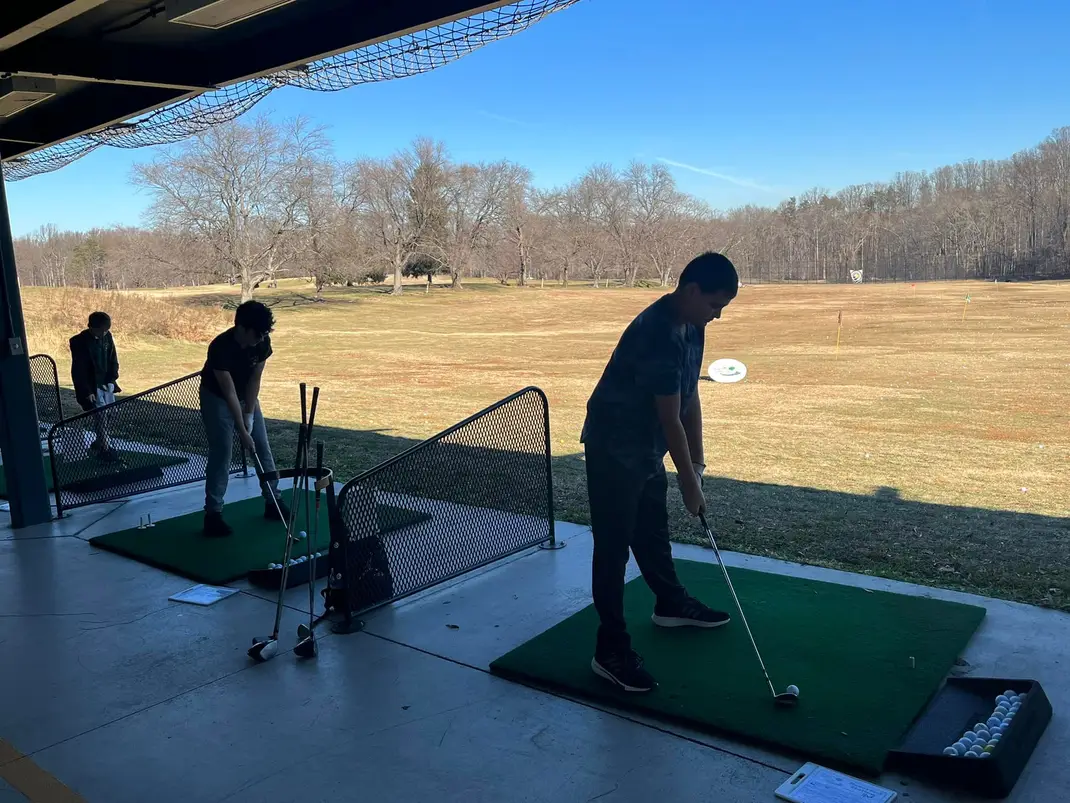
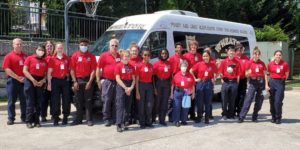

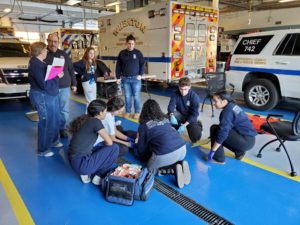 When the Unit sets up a first aid station at an event, the youth officers are in charge of the station and the care provided to the attendees of the event. While there is always an adult advisor present in the station, the officers handle station operations and treat the patients unless adult assistance is needed.
When the Unit sets up a first aid station at an event, the youth officers are in charge of the station and the care provided to the attendees of the event. While there is always an adult advisor present in the station, the officers handle station operations and treat the patients unless adult assistance is needed.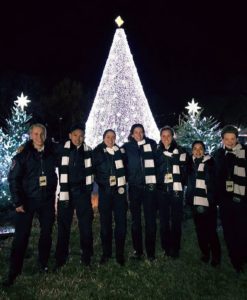 The events for which Explorer Post 742 provide coverage range from small 5K runs, to 50-4,000 person company picnics at Smokey Glen Farm in Gaithersburg, all the way to 250,000 – 1.8 million person events on the National Mall. Working with the National Park Service, we routinely provide coverage to the 4th of July festivities on the Mall, the National Cherry Blossom Festival, the White House Easter Egg Roll, the National Christmas Tree Lighting and the Presidential Inaugurations.
The events for which Explorer Post 742 provide coverage range from small 5K runs, to 50-4,000 person company picnics at Smokey Glen Farm in Gaithersburg, all the way to 250,000 – 1.8 million person events on the National Mall. Working with the National Park Service, we routinely provide coverage to the 4th of July festivities on the Mall, the National Cherry Blossom Festival, the White House Easter Egg Roll, the National Christmas Tree Lighting and the Presidential Inaugurations.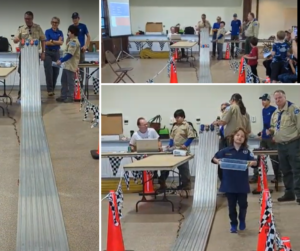 This year, NCAC held its’ inaugural Council Pinewood Derby Championship!
This year, NCAC held its’ inaugural Council Pinewood Derby Championship!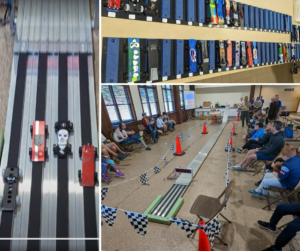 In addition to races for speed at each rank, the Championship included an “outlaw” race in which adults and youth cars were welcome, even over the 50z limit.
In addition to races for speed at each rank, the Championship included an “outlaw” race in which adults and youth cars were welcome, even over the 50z limit.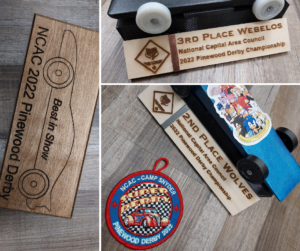 STEM Awards
STEM Awards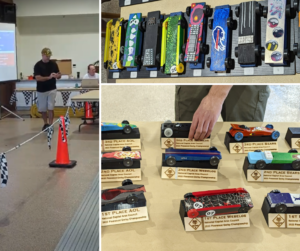 Woodshop steward, Mr. Schneeman, and Exploring Advisor Dr. Ziu also helped with the design and creation of these STEM awards!
Woodshop steward, Mr. Schneeman, and Exploring Advisor Dr. Ziu also helped with the design and creation of these STEM awards!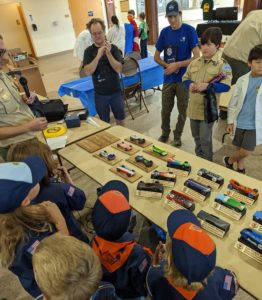 Leadership
Leadership